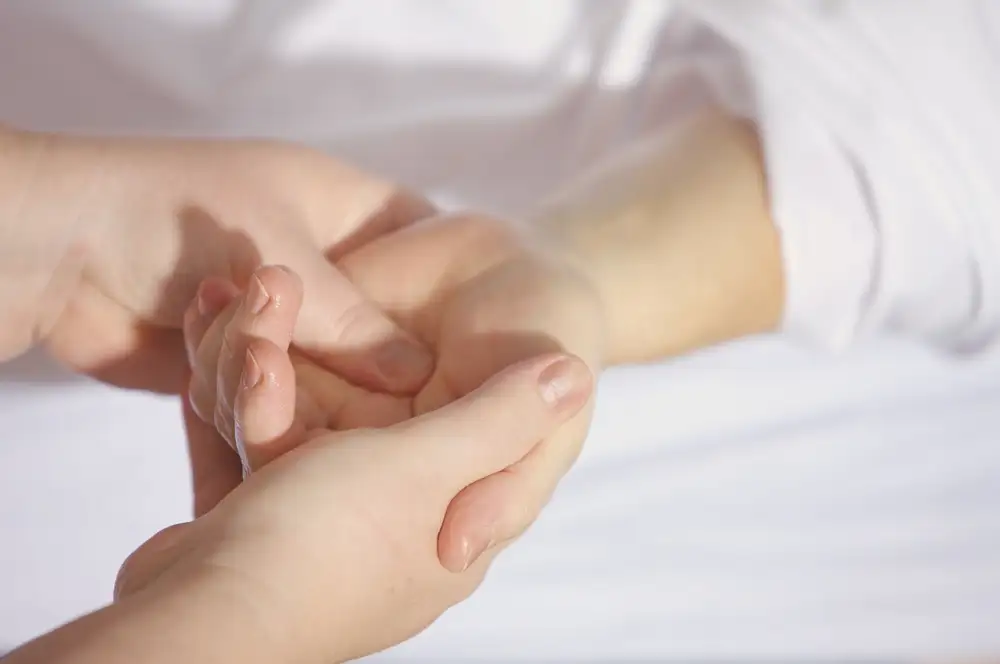Maintaining Professional Boundaries: Ensuring a Safe and Respectful Massage Experience

- Understanding the concept of inappropriate behavior during a massage
- The potential risks and consequences of massage creep on the recipient's well-being
- Recognizing the signs of massage creep and how to protect yourself
- The importance of professional boundaries and ethics in the massage therapy profession
- Steps to ensure a safe and respectful massage experience
- Seeking support and reporting incidents of massage creep
Massage creep refers to the inappropriate behavior exhibited by massage therapists during a session. This misconduct can range from making suggestive comments to engaging in unwanted physical contact. Such actions not only violate professional boundaries but also pose serious implications for the health industry. Clients seeking massage therapy expect a safe and respectful environment, where their well-being is prioritized. Therefore, it is crucial to address this issue and ensure that all individuals involved in the profession adhere to ethical standards, promoting a culture of safety and respect.
Understanding the concept of inappropriate behavior during a massage
Understanding the concept of inappropriate behavior during a massage is crucial for both massage therapists and recipients. Inappropriate behavior refers to any actions or gestures that violate professional boundaries and make the recipient feel uncomfortable or unsafe. This can include touching inappropriately, making suggestive comments, or engaging in any form of sexual misconduct. It is important to recognize that these behaviors are not only unethical but also illegal, as they constitute a violation of personal boundaries and consent. By understanding what constitutes inappropriate behavior, we can work towards creating a safe and respectful environment for all individuals involved in the massage therapy profession.
The potential risks and consequences of massage creep on the recipient's well-being
Massage creep, or the act of inappropriate behavior during a massage, can have severe consequences on the recipient's well-being. It can lead to feelings of violation, discomfort, and even trauma. The recipient may experience emotional distress, anxiety, and a loss of trust in the massage therapy profession. In some cases, it can also result in physical harm or injury. It is crucial to address and prevent massage creep to ensure a safe and respectful massage experience for all clients.
Recognizing the signs of massage creep and how to protect yourself
Recognizing the signs of massage creep is crucial in ensuring a safe and respectful experience. Some red flags to watch out for include excessive touching in sensitive areas, inappropriate comments or conversations, and requests for sexual favors. To protect yourself, trust your instincts and speak up if something feels uncomfortable or crosses your boundaries. Remember that you have the right to end the session at any time and report any incidents to the appropriate authorities.
The importance of professional boundaries and ethics in the massage therapy profession
Professional boundaries and ethics are of utmost importance in the massage therapy profession. Maintaining clear boundaries ensures a safe and respectful environment for both the therapist and the client. It establishes trust and professionalism, allowing clients to feel comfortable and secure during their massage sessions. By adhering to ethical guidelines, therapists demonstrate their commitment to providing quality care while safeguarding the well-being of their clients.
Steps to ensure a safe and respectful massage experience
1. Choose a reputable and licensed massage therapist: Research and select a therapist who is certified and has a good reputation in the industry.
2. Communicate your boundaries: Before the session, clearly communicate your comfort level, areas of focus, and any specific concerns or sensitivities you may have.
3. Establish consent: Throughout the session, the therapist should always ask for your permission before touching sensitive areas or adjusting draping.
4. Maintain open communication: If at any point during the massage you feel uncomfortable or notice any inappropriate behavior, speak up immediately.
5. Trust your instincts: If something feels off or wrong, trust your intuition and consider ending the session.
6. Respect personal space: The therapist should maintain appropriate physical distance and avoid unnecessary contact that may make you feel uncomfortable.
7. Ensure privacy: The massage room should provide adequate privacy with proper draping techniques to protect your modesty.
8. Follow professional guidelines: Massage therapists should adhere to ethical standards set by professional organizations, ensuring they maintain professionalism at all times.
By following these steps, you can help create an environment that promotes safety, respect, and a positive massage experience for both you and the therapist.
Seeking support and reporting incidents of massage creep
Seeking support and reporting incidents of massage creep is crucial in ensuring the safety and well-being of massage recipients. If you have experienced any form of inappropriate behavior during a massage, it is important to speak up and seek support from trusted individuals such as friends, family, or colleagues. Additionally, reporting the incident to the appropriate authorities or professional organizations can help prevent further occurrences and protect others from experiencing similar situations. Remember, your voice matters, and by speaking out, you contribute to promoting a culture of safety and respect in the health and wellness industry.
Conclusion: Promoting a culture of safety and respect in the health and wellness industry is crucial to maintaining the integrity of massage therapy. By understanding the implications of massage creep and inappropriate behavior, both therapists and clients can work together to create a safe environment. It is essential for therapists to establish professional boundaries, adhere to ethical guidelines, and be vigilant in recognizing signs of misconduct. By seeking support and reporting incidents, we can ensure that everyone receives the respectful and healing experience they deserve. Let us strive for a future where safety and respect are at the forefront of every massage session, creating an industry that delights the senses while prioritizing well-being.
Published: 24. 12. 2023
Category: Health



